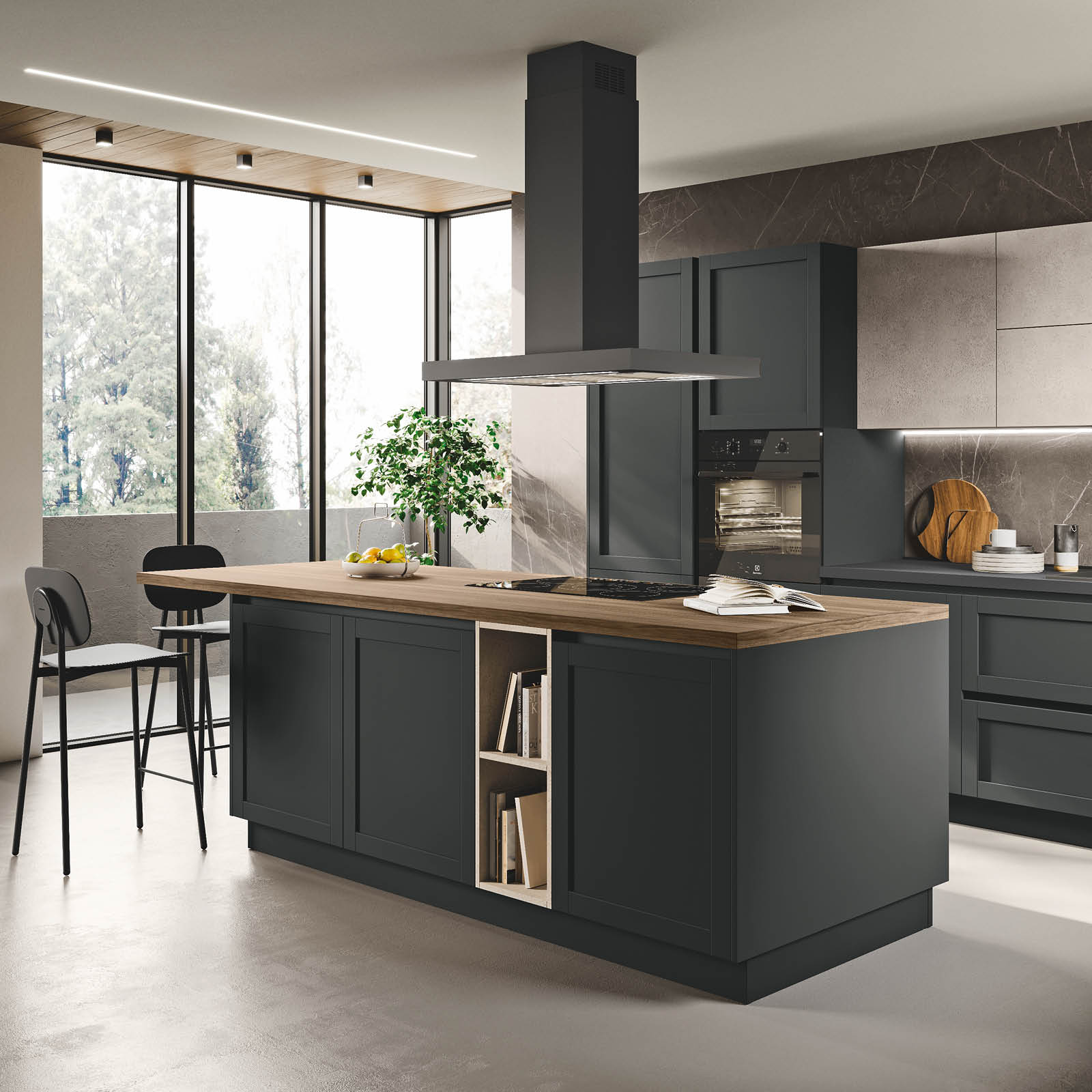 Italian kitchen design is renowned for its ability to seamlessly blend timeless aesthetics with functional efficiency. Nowhere is this delicate balance more evident than in the layout of kitchen cabinets. Italian designers have mastered the art of creating spaces that are not only visually stunning but also highly practical. In this article, we’ll explore how Italian kitchen cabinet layouts prioritize both form and function, transforming kitchens into harmonious and efficient culinary havens.
Italian kitchen design is renowned for its ability to seamlessly blend timeless aesthetics with functional efficiency. Nowhere is this delicate balance more evident than in the layout of kitchen cabinets. Italian designers have mastered the art of creating spaces that are not only visually stunning but also highly practical. In this article, we’ll explore how Italian kitchen cabinet layouts prioritize both form and function, transforming kitchens into harmonious and efficient culinary havens.
-
Open Shelving and Display Cabinets:
- Aesthetic Showcase: Italian kitchens often incorporate open shelving or glass-front display cabinets to showcase decorative items, dishware, or glassware. This not only adds a personalized touch but also enhances the overall aesthetic appeal of the kitchen.
- Practical Display: The strategic placement of open shelving allows for easy access to frequently used items. Display cabinets, often illuminated with integrated lighting, create a focal point in the kitchen while providing a functional storage solution.
-
Bespoke Design for Efficiency:
- Tailored Storage Solutions: Italian kitchen cabinets are frequently designed with a bespoke approach, taking into account the specific needs and preferences of the homeowner. Customized storage solutions optimize space and ensure that every inch of the kitchen is utilized efficiently.
- Maximizing Storage: From pull-out drawers for pots and pans to specialized organizers for utensils and spices, bespoke Italian cabinets prioritize functionality. This tailored design enhances organization, making the kitchen a practical workspace.
-
Efficient Layouts for Workflow:
- Triangular Work Zones: Italian kitchen design often follows the principle of the kitchen work triangle, emphasizing efficiency in the placement of the stove, sink, and refrigerator. This layout ensures a smooth workflow, making it easy for cooks to move between key areas.
- Zoned Storage: Cabinets are strategically placed near work zones to provide convenient storage for utensils, ingredients, and cookware. This zoning approach optimizes the kitchen layout for both aesthetics and functionality.
-
Integration of Appliances:
- Seamless Appliance Integration: High-end Italian kitchens often feature cabinets that seamlessly integrate appliances behind custom panels. This not only maintains a cohesive design but also ensures that appliances are discreetly concealed when not in use.
- Elevating Aesthetics: Integrating appliances into the cabinetry elevates the overall aesthetic appeal of the kitchen, creating a streamlined and uncluttered look. This design choice is a testament to the commitment to form and function in Italian kitchen layouts.
-
Multi-Functional Islands:
- Centralized Workspaces: Kitchen islands in Italian designs serve as multi-functional hubs, providing additional workspace, storage, and sometimes seating. This centralized approach enhances the efficiency of the kitchen layout while contributing to a cohesive design.
- Hidden Storage: Islands often conceal additional storage space, incorporating features like pull-out shelves or drawers. This hidden storage contributes to the overall organization of the kitchen, ensuring that items are easily accessible.
-
Aesthetic Harmony with Material Choices:
- High-Quality Materials: Italian kitchen cabinets often feature high-quality materials such as natural woods, lacquers, and metals. The careful selection of materials contributes not only to the durability of the cabinets but also to the visual harmony of the kitchen.
- Coordinated Finishes: The choice of finishes for cabinets, countertops, and backsplashes is meticulously coordinated. This attention to detail ensures a cohesive and elegant appearance that aligns with both traditional and modern Italian design sensibilities.
-
Innovative Lighting Solutions:
- Task Lighting: Italian kitchens prioritize task lighting to illuminate workspaces efficiently. Under-cabinet lighting, pendant lights, and integrated LED strips contribute to both functionality and aesthetics, creating a well-lit and inviting kitchen.
- Ambient Lighting: Lighting is not just practical but also a design element. Ambient lighting, such as recessed lights or chandeliers, adds a layer of ambiance to the kitchen, creating a warm and welcoming atmosphere.
Conclusion:
Italian kitchen cabinet layouts are a masterful blend of form and function, demonstrating a commitment to both aesthetics and practicality. From open shelving and bespoke design for efficiency to efficient layouts based on workflow principles, Italian kitchens are meticulously crafted spaces. The integration of appliances, multi-functional islands, careful material choices, and innovative lighting solutions further exemplify the balance between beauty and functionality. By prioritizing both form and function in cabinet layouts, Italian kitchen design creates spaces that not only inspire with their visual appeal but also enhance the joy and efficiency of daily culinary activities.
